By Robert Heege
It was the spring of 1097 and the Turks guarding the walls of Nicaea were in a confident mood.
The fabled fortress city of Asia Minor had, up until very recently, been a jewel in the crown of Byzantine Christian Emperor Alexius. Now it belonged to them, fueling their belief that the whole of Byzantium’s ever shrinking domains was preordained to become theirs as well. It was a decidedly Moorish brand of “manifest destiny” that even the Pope in Rome seemed unable to thwart.
Driven to fits by the thought that the Holy Land was in the hands of the Mohammedans, Urban II had nearly shouted himself hoarse exhorting the faithful to drive them out. Whipped into a suitably religious frenzy, a ragtag mob of peasant zealots led by one Peter the Hermit, had set out on foot from northern France on a Christian jihad to do just that they had actually succeeded in walking all the way to Asia Minor where, at Nicaea, their fool’s luck had run out.
In its glory days, the city had sponsored two landmark ecumenical councils instrumental in formulating much of the teachings of the early Christian church. Unfortunately for the Hermit’s disciples, the Turks were not in the mood for a theological debate. On November 21, 1096, at the Dracon passage, a Turkish army caught up with Peter’s wild-eyed amateurs and, in an orgy of slaughter and annihilation, proceeded, with great relish, to cut them to pieces.
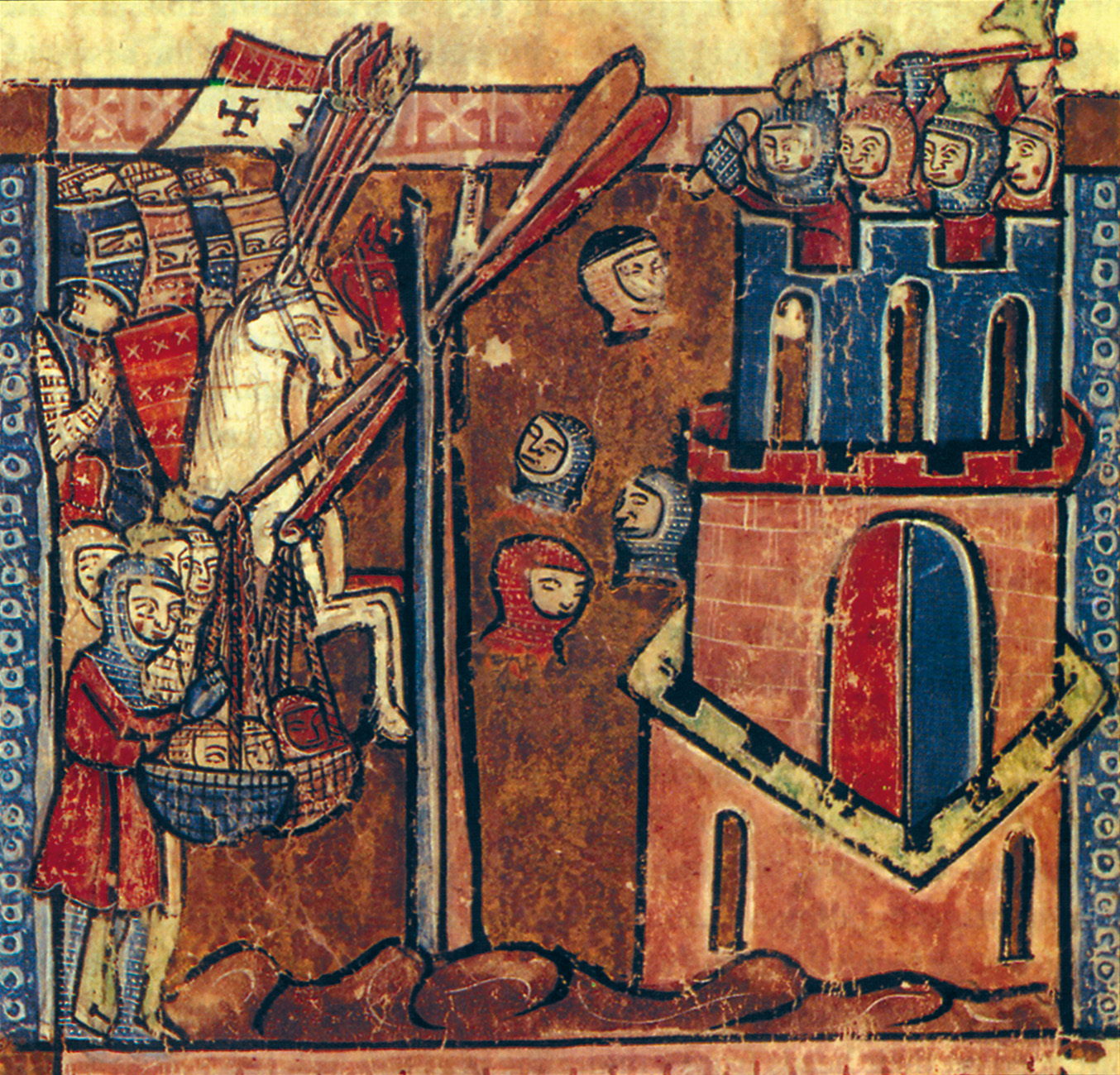
The floor of the Dracon Passage was still littered with their sun-bleached bones half a year later, when, in May of 1097, a mighty host of Christian Crusaders arrived on the scene and promptly laid siege to the city. Sheltered behind Nicaea’s thick walls, the Turks within were certain that they could hold out against the Europeans. They were in for a big surprise. Amid the unmistakable sounds of hammers striking wood, the Turks could only listen apprehensively as the Crusaders’ company of carpenters and engineers went to work constructing their most formidable weapon.
Suddenly, huge rocks were sailing through the air, slamming into the walls and towers of the city, terrifying its inhabitants. then, after butchering two Turkish relief columns in fierce hand-to-hand fighting, the Crusaders began to ratchet up the misery index yet another notch. To the horror of the besieged, a torrent of severed human heads began raining down upon the defenders of Nicaea. The Crusaders had lopped off the heads of the Turkish corpses that lay in heaps around Nicaea and were now sending them flying over the walls of the city. On June 19, thoroughly traumatized by their ordeal, the Turks surrendered. So great was their dread that they begged to be allowed to give the city back to the Byzantines rather than meet their fearsome new enemy, the Crusaders, face to face. For the Turks at Nicaea, it was enough that they had already come face to face with the most potent weapon in the European arsenal: the medieval catapult.
From Onager to Catapult
As siege engines go, however, the catapult (from the Greek “Katapultos” or “shield piercer”) that struck such terror into the besieged defenders of Nicaea was actually an inferior imitation of a much more accurate and efficient torsion weapon of the ancient Greco-Roman period known as the onager. Constructed entirely of wood, the Roman onager consisted of a kind of chassis set on four wheels upon which was mounted a long wooden “arm” with a large sling on the end of it.
The throwing arm of the onager was placed between strands of thick, sinewy rope that had been coiled and twisted to create a rotational force. A winch and ratchet were used to ensure that the rope was wound tightly, then a windlass (and a considerable amount of elbow grease) supplied the final measure of tension, pulling the throwing arm tightly back until it was nearly plumb with the ground. The arm was then secured with a slip hook and the sling was loaded—usually with a large rock. When the slip hook was tripped, the sudden, violent release of energy sent the throwing arm rocketing back into its upright position while the sling sent the payload hurtling toward the target. The word “onager” or “onagrus” is actually the latin word for a donkey (literally, a “wild ass”). The Romans so christened the device owing to its tendency to rear up its back end when fired.
With the fall of the Roman Empire and the advent of the Dark Ages, the glory days of the Roman onager came to an abrupt end. It wasn’t until the early Middle Ages that the feudal lords of Europe, looking to the ancients for inspiration, attempted to revive the technology. Unfortunately, they were unable to produce driving ropes with the same degree of strength and resiliency as their Roman ancestors. Fashioned from tightly wound straps made of leather, animal hair, or hemp called skeins, the “ropes” were extremely vulnerable to the effects of humidity, dampness, and especially rain. If the skeins became wet or even damp, they had a tendency to slacken, rendering the entire contraption completely useless. This was a constant problem, not only in the rainy climate of Western Europe, but also in the Middle East, where, despite the usual dry weather, many a Crusader army suddenly found its vaunted siege engines totally neutralized by an unexpected downpour.
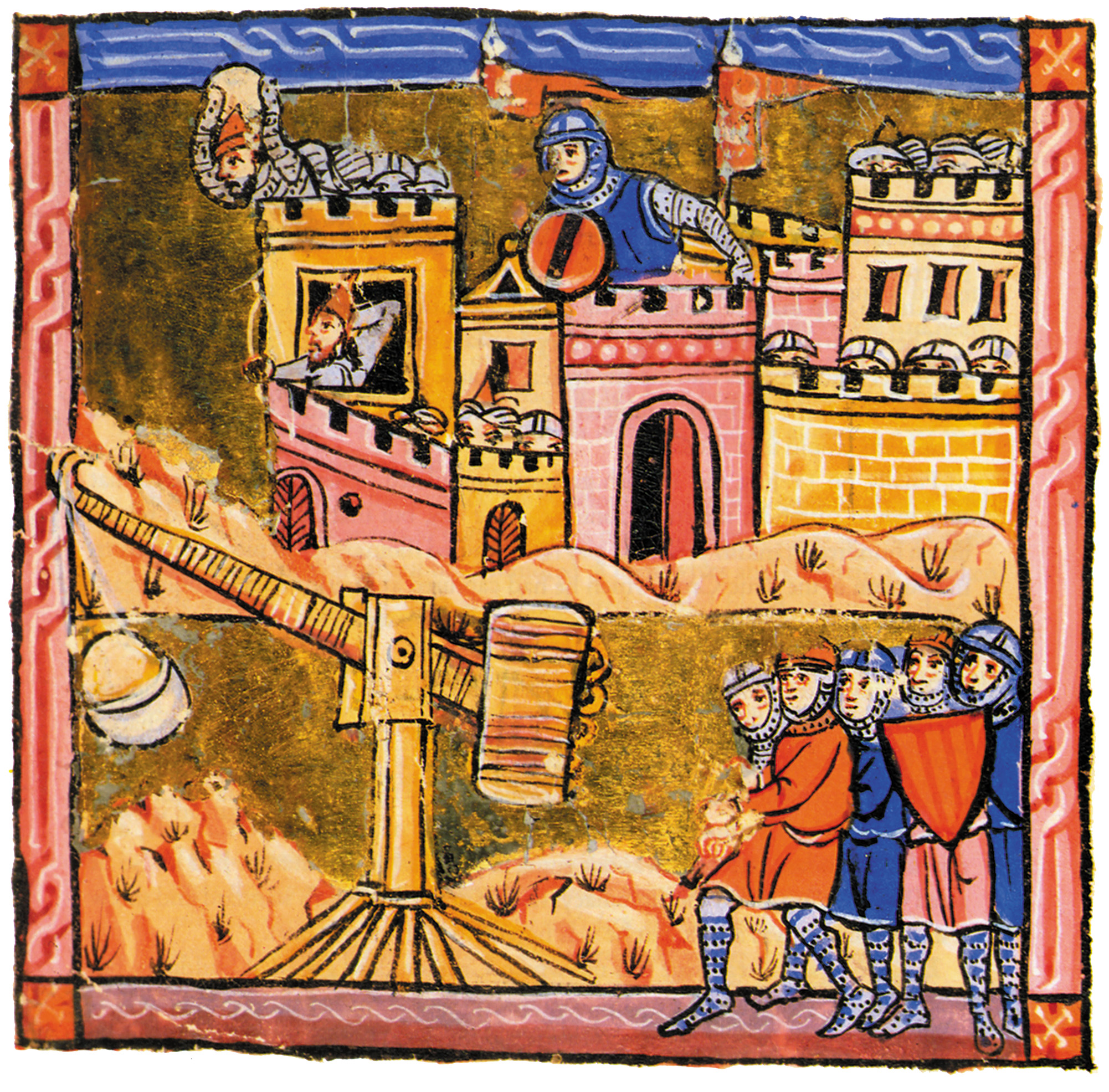
Another major drawback was the fact that this particular medieval “weapons system” was decidedly high-maintenance, requiring the expertise of a specially trained “technician” to constantly tighten the skeins and rebalance the entire apparatus to keep the machine on target, tasks that would have been difficult enough to perform during peacetime, much less during the danger-filled heat of battle. Even the basic human mortality of the soldier operating the device became a factor. If he was incapacitated or killed, lack of a skilled replacement would effectively put the weapon out of action. Moreover, the sling at the end of the throwing arm was inexplicably replaced with a vastly inferior wooden scoop that seriously affected the weapon’s accuracy. As a result, the “onager” of the early medieval period, known as a mangonel (or “nag”), remained a poor relation. It did, nevertheless, make one enduring, if dubious contribution to the lexicon. The mangonel (from the Latin “manganon” or “engine of war”) was often referred to by its other nickname, the “gonne,” from which our modern word “gun” is derived.
The Trebuchet
It was during the late 12th century, however, at the height of the Crusades, that medieval military engineering finally caught up with, and, in fact, surpassed its forebears, with the development of a counterpoise, or counterweight siege engine known as the trebuchet. Although it is believed that the Chinese may have invented a small type of trebuchet as early as 300 bc, the medieval trebuchet’s ultimate origins remains obscure. The word “trebuchet” is derived from the Old French word “trabucher,” which means “to overturn” or “to fall over.”
Trebuchets worked something like a seesaw. Suspended from a large, elevated wooden framework, the throwing arm of the trebuchet pivoted out roughly a quarter of the way down its length. A large counterweight, or counterpoise, weighing as much as 10 tons, was suspended on the shorter end. The longer end, which was fitted out with a sling, was winched down, raising the counterweight (counterpoise) high into the air. Once the arm, which could be as long as 50 feet, was secured, the sling was carefully stretched out underneath it and the projectile of choice (most often a large stone weighing, in some cases, upward of 300 pounds) was placed within it. When the counterweight was released, the arm flew up with explosive force. The sling would then release the massive stone, sending it hurtling hundreds of yards through space toward the intended target in a high, looping arc.
With that kind of “firepower,” it was not unusual for castle or fortress walls to be breached with a single shot, as was the case during the Crusader’s siege of Acre in 1191, when a particularly massive trebuchet dubbed “Bad neighbor” to pounded whole sections of the city’s walls into rubble with each shot. A similar misery was afforded the hapless defenders of Castle Naudry when it was besieged in 1211 by the Occitanians. The defenders left the following record to posterity: “With the first shot they knocked down a tower. With the next, in everyone’s sight, they destroyed a chamber. With the third shot they fired, the stone disintegrated, but not before causing great injury to those who were inside the town.”
The most famous trebuchet of all was probably the massive siege engine known as the “Warwolf,” which was used to pound the Scots into submission at the siege of Stirling castle in 1304. It is said that 50 of English King Edward I’s carpenters labored day and night to create it, and when they were finished they had built the medieval equivalent of the hydrogen bomb.
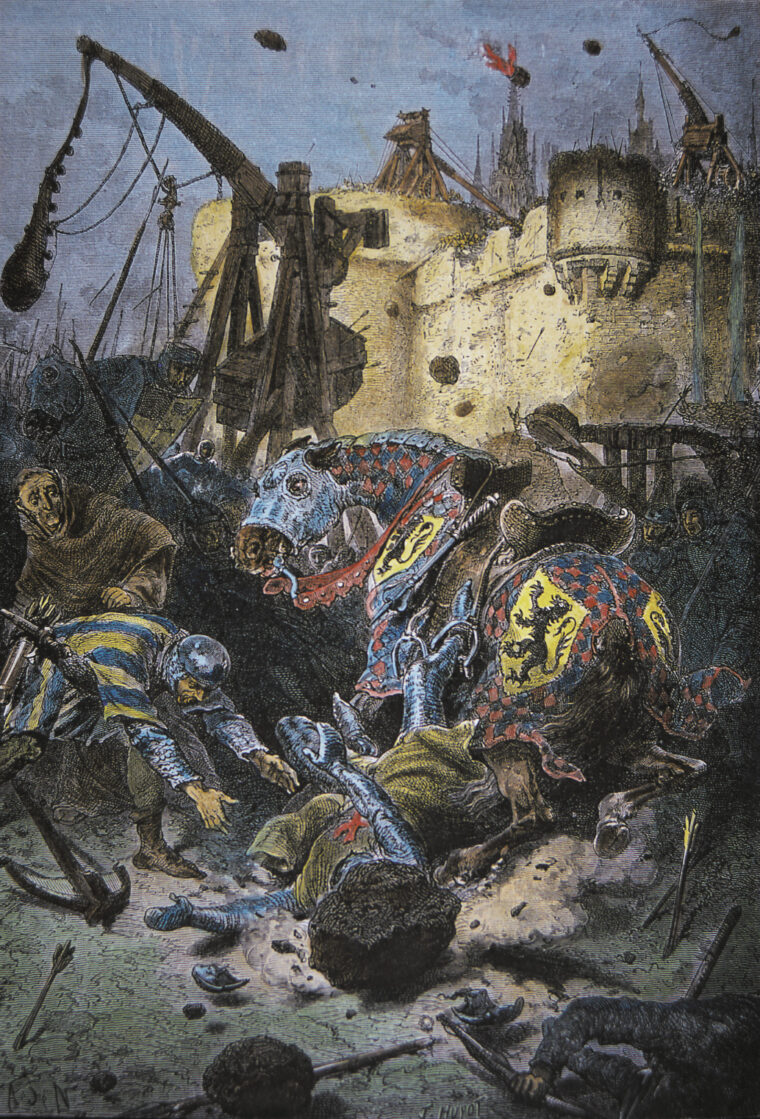
Uses and Limitations
Although the earliest trebuchets had either a fixed or pivoting counterpoise, later versions employed a counterpoise that could be slid up and down the arm, enabling the “gunner” to adjust for range. Trajectory was determined largely by the weight of the projectile and the angle of the release mechanism at the end of the trebuchet’s arm. Changing the weight of the projectile altered the trajectory. As a result, adjusting either the release angle or the length of the sling was a constant preoccupation for the “gun crew.” A shorter sling line allowed the arm to swing through a greater arc before the sling could catch up to it, creating a faster sling rotation. The result was a higher trajectory. A longer sling line created a slower rotation and a later release, resulting in a flatter trajectory.
The only drawbacks were the slow rate of fire and the machines’ lack of mobility. Transport was impossible due to the machines’ great size and weight and, as a result, trebuchets had to be constructed at the sight of a siege. Accordingly, smaller, so-called traction trebuchets were later developed. These used smaller projectiles that could sweep whole rows of archers from the parapeits. the massive counterweights were replaced with a team of upward of 12 men pulling down on ropes attached to the shorter end of the throwing arm. Thus, rate of fire was increased and the machines could be moved from place to place and even used from campaign to campaign, much like modern artillery.
During times of peace, trebuchets were employed to shower the ladies of the royal court with roses during tournaments; however its most infamous uses were more along the lines of what occurred at Nicaea. As a weapon of terror, it was unsurpassed. Not only severed heads, but hostages, captured prisoners, ineffective negotiators, lepers, plague victims, human corpses, diseased animal carcasses, barrels of excrement, and all manner of vermin were hurled over many a castle or city wall in an effort to induce capitulation.
Trebuchets became such a mainstay of warfare that they remained in use for centuries and died hard, being finally superceded by gunpowder the cannon. Its last recorded use was in the New World in 1521, when the Spanish conquistadors under Hernan Cortes laid siege to the Aztec capital of Tenochtitlan in what is now Mexico City.
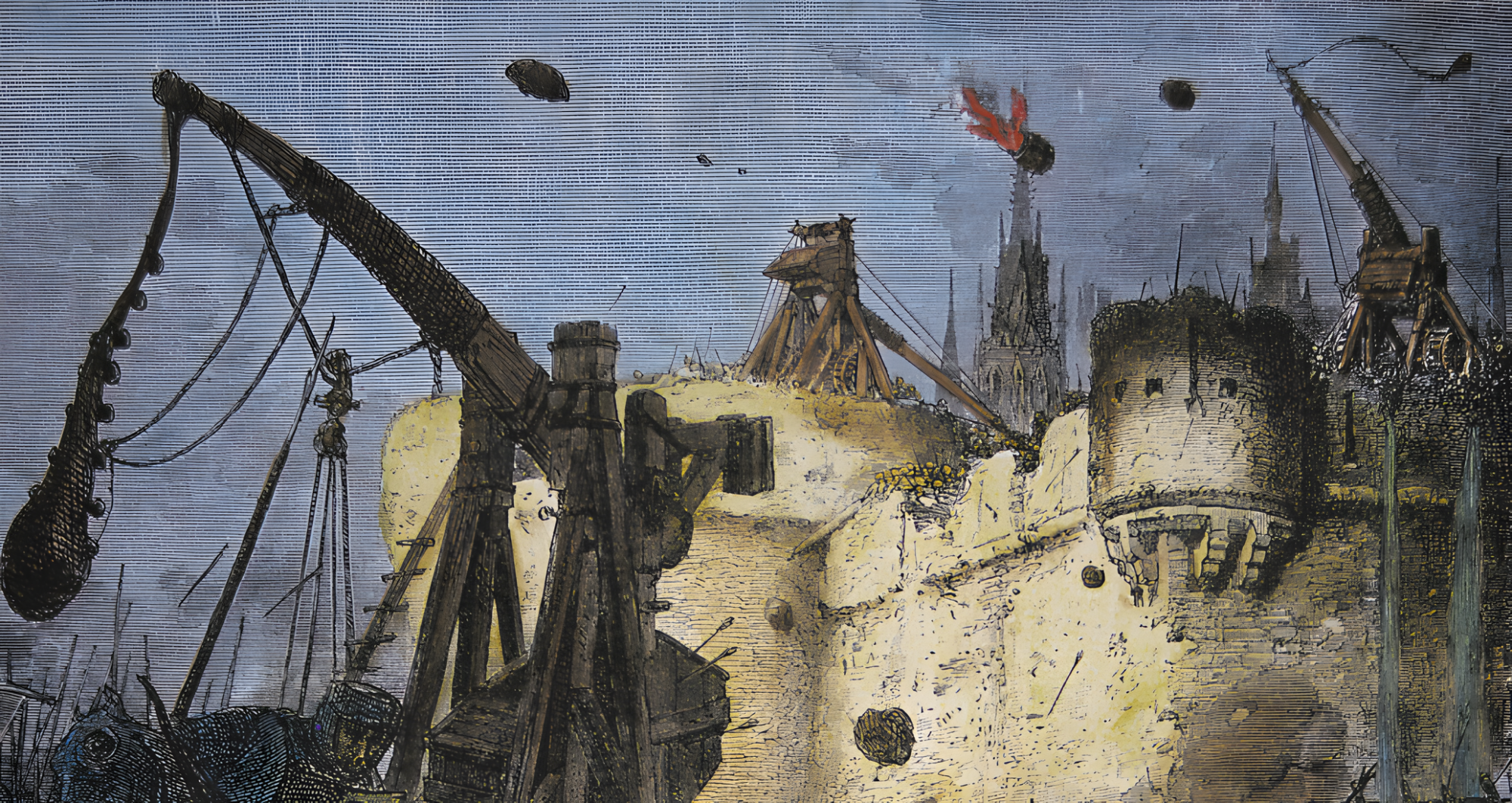
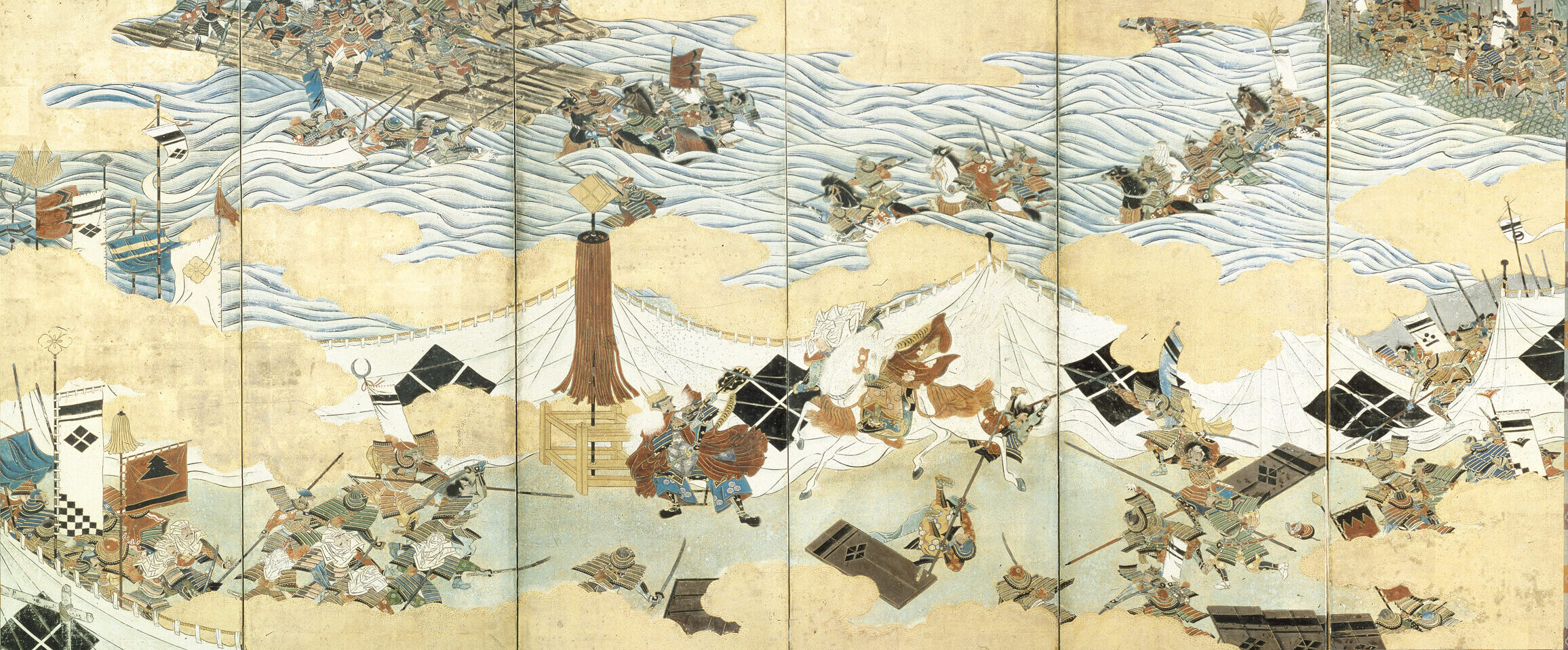
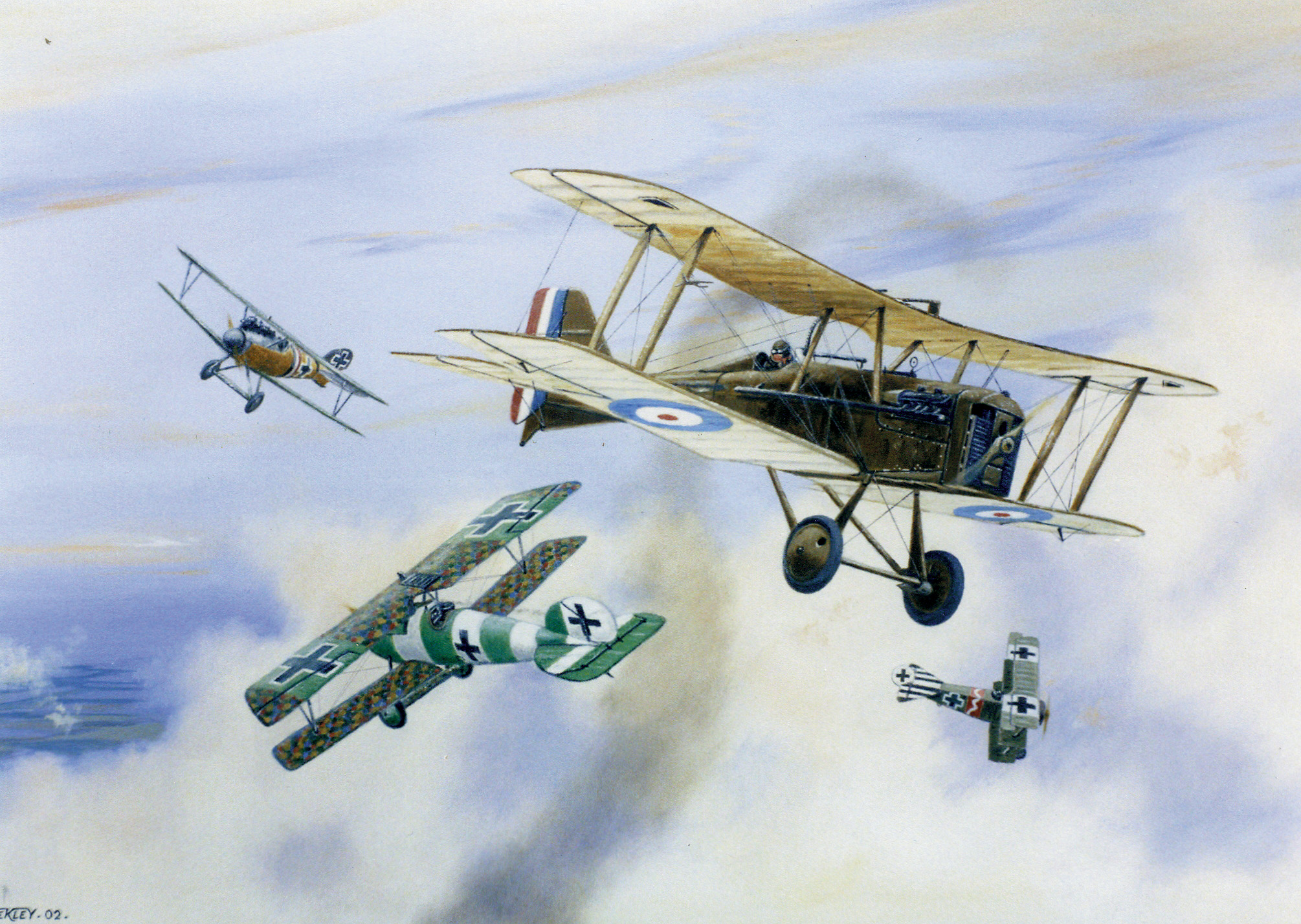
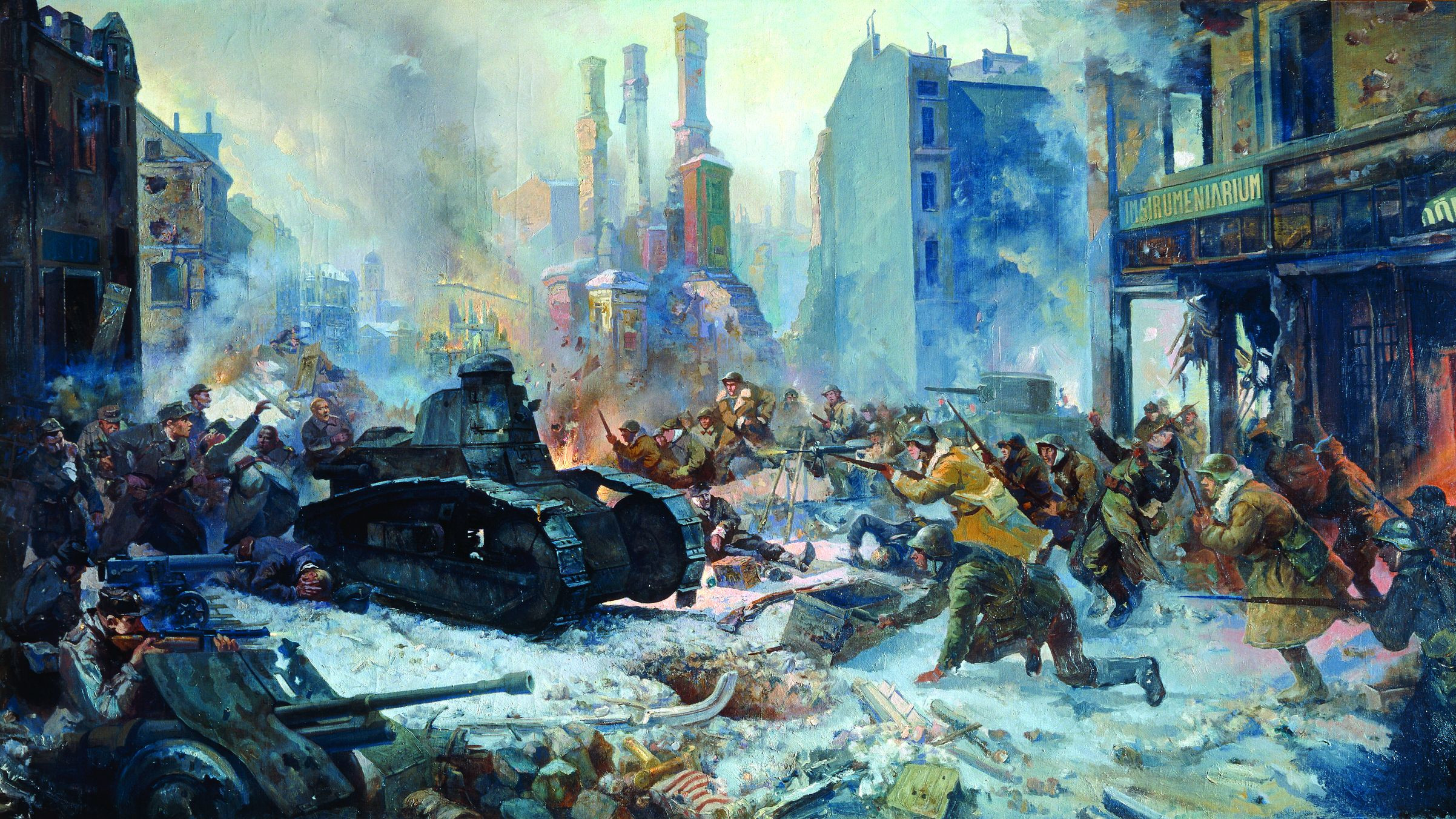
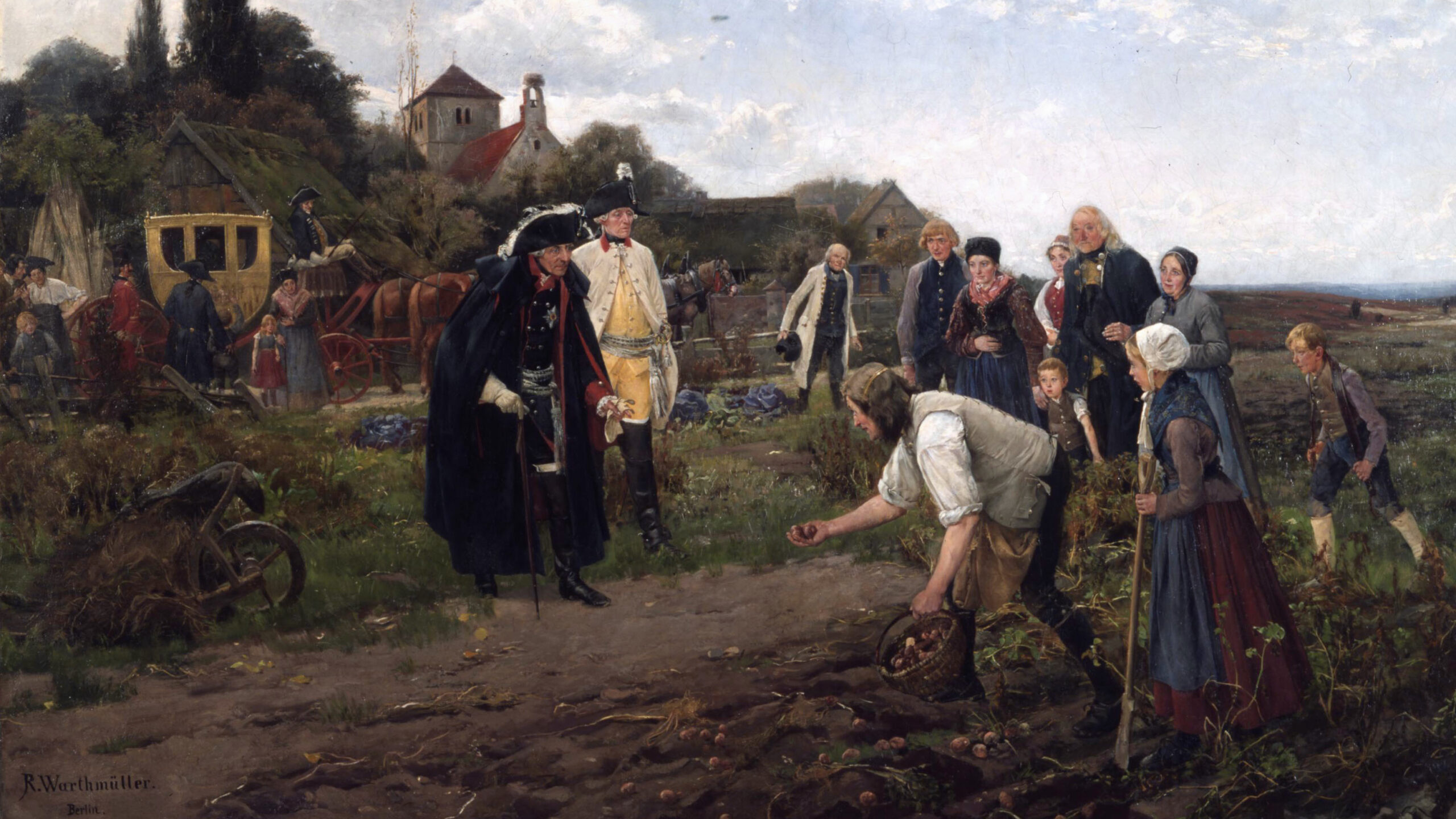
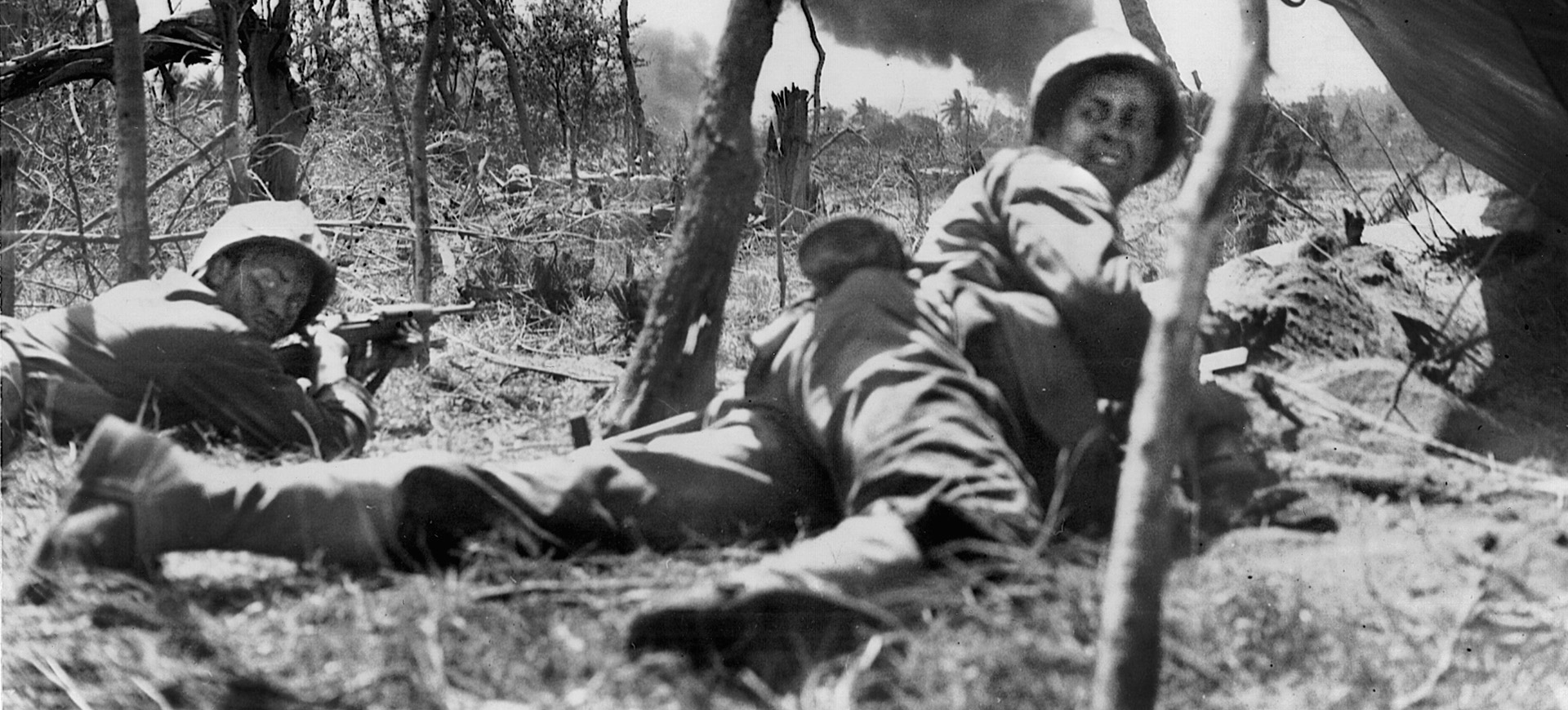
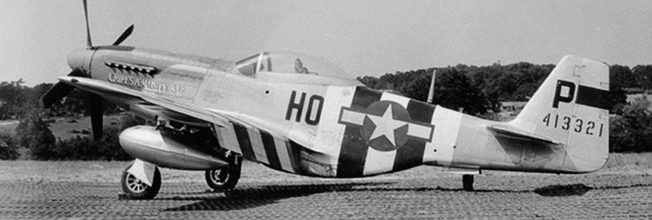
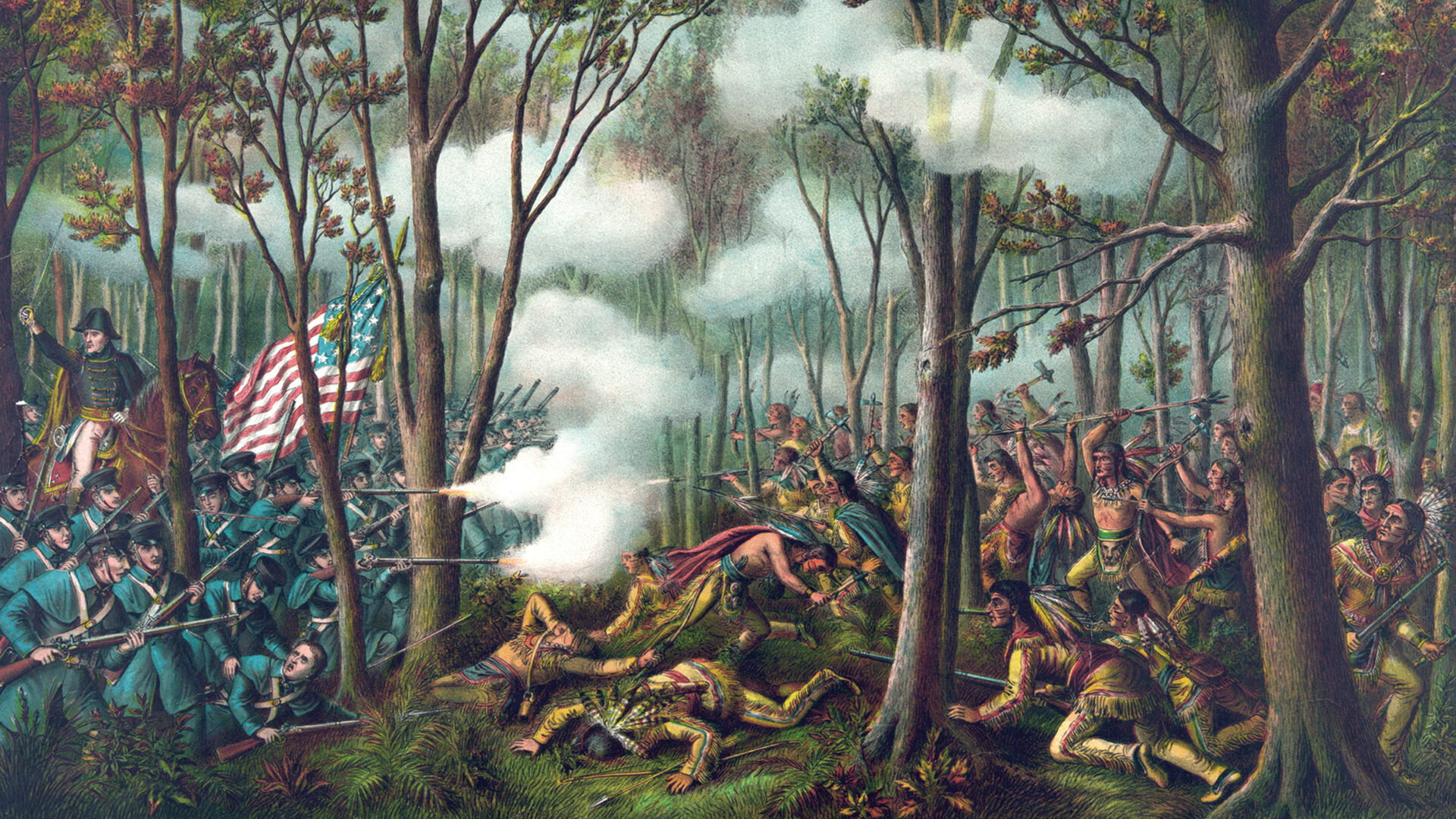

Join The Conversation
Comments
View All Comments